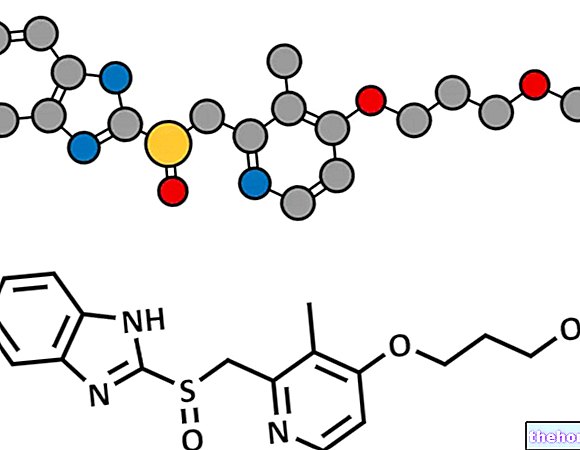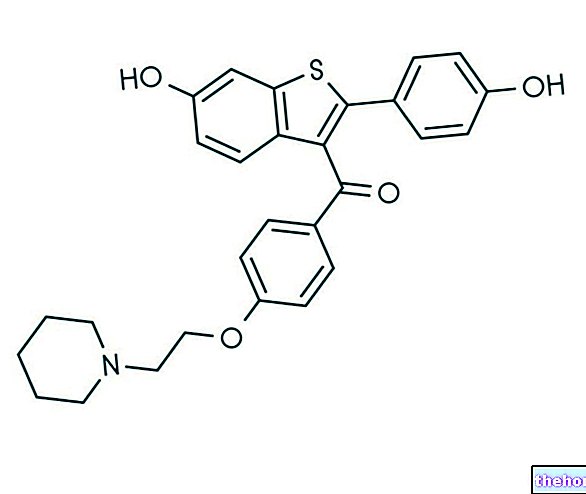Definition
Retinoblastoma is a malignant tumor that affects the retina. This cancer can develop at any age, but it usually tends to occur during the first five years of life.
Generally, retinoblastoma affects only one eye, but the possibility that the neoplasm may develop in both eyes cannot be ruled out.
Two forms of retinoblastoma can be distinguished: sporadic (60% of cases) and hereditary (40% of cases).
Causes
The triggering cause of the tumor lies in the mutation of the RB1 tumor suppressor gene located on chromosome 13. This genetic alteration leads the cells of the retina to develop rapidly and uncontrollably, thus giving rise to the neoplasm.
In some cases, the altered gene is inherited directly from the parents (hereditary form); in other cases, however, the genetic alteration occurs randomly during the development of the fetus (sporadic form).
Symptoms
The characteristic symptom of retinoblastoma is leukocoria, which is a grayish-white reflex that occurs at the pupil when the latter is illuminated by a beam of light.
Other symptoms that can occur in patients with retinoblastoma are: eye pain, eye redness, eye fatigue, decreased vision, narrowing of the visual field, developmental delay, glaucoma and strabismus.
The information on Retinoblastoma - Retinoblastoma Treatment Drugs is not intended to replace the direct relationship between health professional and patient. Always consult your doctor and / or specialist before taking Retinoblastoma - Retinoblastoma Medication.
Medicines
Fortunately, children diagnosed with retinoblastoma have a good chance of recovery. In this sense, the early diagnosis of the neoplasm is very important, in fact, retinoblastoma is a very aggressive tumor that can metastasize, spreading to the bones, bone marrow and lymph nodes. For this reason, its timely treatment is essential, before the metastasis begins.
The therapeutic strategies undertaken against retinoblastoma, of course, aim at the eradication of the tumor, while trying - as far as possible - to safeguard both the eye and the sight of the patient.
When the tumor is in an early stage, generally, it intervenes through laser therapy, thermotherapy, or by freezing the tumor, that is, through cryotherapy.
When, on the other hand, the tumor is in a more advanced stage, the doctor may decide to intervene by subjecting the patient to chemotherapy and / or radiotherapy.
In addition, chemotherapy and radiotherapy can also be used to treat metastatic retinoblastoma and, if necessary, to eliminate any remaining cancer cells following other treatments.
Generally, chemotherapy is administered systemically, although, in some cases, it can be administered directly into the ophthalmic artery (intra-arterial route) minimizing its side effects.
In the event that the tumor is too large and no other therapeutic strategies can be undertaken, however, the doctor may decide to resort to "surgical removal of the diseased eye", followed by the placement of an implant in the eye socket.

Below are some examples of anticancer drugs that can be used in therapy against retinoblastoma and some examples of pharmacological specialties; it is up to the doctor to choose the active ingredient and dosage most suitable for the patient, based on the severity of the disease, the state of health of the patient and his response to treatment.
Vincristina
Vincristine (Vincristina Teva ®) is an anticancer of natural origin, isolated for the first time from Madagascar periwinkle. It is an active ingredient that has therapeutic indications for the treatment of retinoblastoma.
The drug is available in pharmaceutical formulations that allow for parenteral administration. The usual dose of vincristine used in children is 1.5-2 mg / m2 of body surface area, given intravenously once a week.
However, in children whose body weight is less than 10 kg, it is generally recommended to start vincristine-based therapy with a dosage of 0.05 mg / kg of body weight, always to be administered intravenously once the week.
Cyclophosphamide
Cyclophosphamide (Endoxan Baxter ®) is an anticancer drug belonging to the class of alkylating agents, available in pharmaceutical formulations suitable for oral and parenteral administration.
When administered intravenously, the usual dose of cyclophosphamide is 3-6 mg / kg of body weight per day.
In cases where it is necessary to institute maintenance therapy, this is usually carried out by administering cyclophosphamide orally at a dose of 50-200 mg per day, to be taken with plenty of water.
In any case, the doctor will determine the exact amount of medicine to be taken, the frequency of administration and the duration of treatment for each patient, depending on the severity and stage of the retinoblastoma and depending on the clinical condition of the patient. patient and his response to the therapy itself.




























